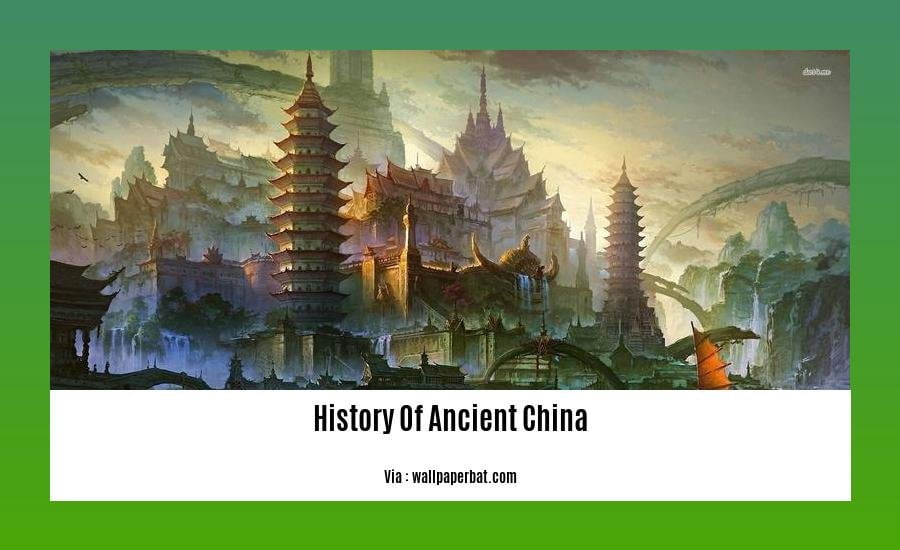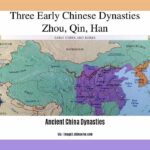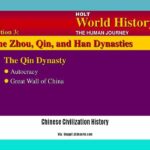Embark on a Historical Journey: Unraveling the History of Ancient China, a land shrouded in mystery and steeped in rich traditions. Travel through time to witness the rise and fall of mighty dynasties, marvel at groundbreaking inventions, and delve into the intricacies of a civilization that shaped the world we know today. Join us as we uncover the hidden treasures of ancient China’s past, from its humble beginnings to its glorious zenith.
Key Takeaways:
- 40,000 B.C.: Humans (Homo sapiens) first appear in China.
- 17,000 BC: First ceramics made in China.
- 10,000 B.C.: Rice and millet cultivation begins.
- 2,500 B.C.: Longshan Culture emerges.
- 2,100 B.C.: Kingdom of Erlitou (Xia Dynasty) established.
- 1,700 B.C.: Shang Dynasty begins.
- 1,050 B.C.: Zhou Dynasty ascends.
- 700 B.C.: Construction of the Great Wall commences.
- 221 BCE: Qin Shi Huang unifies China into a single empire.
- 206 BCE – CE 220: Han Dynasty reigns.
History of Ancient China
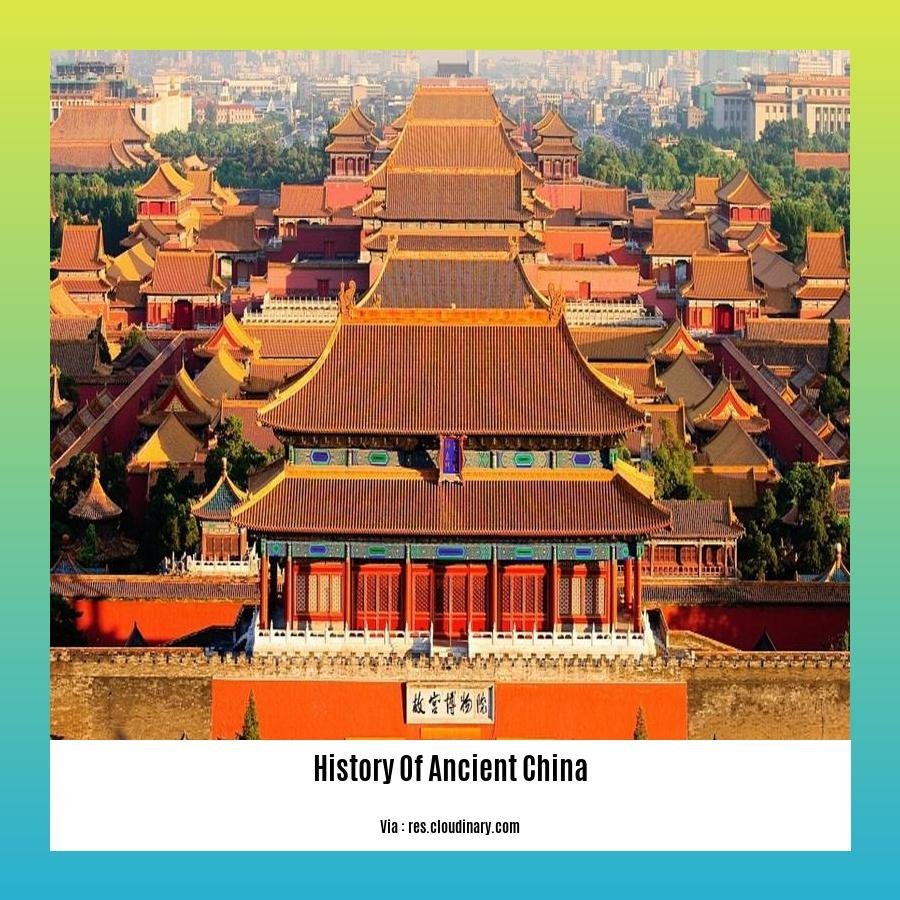
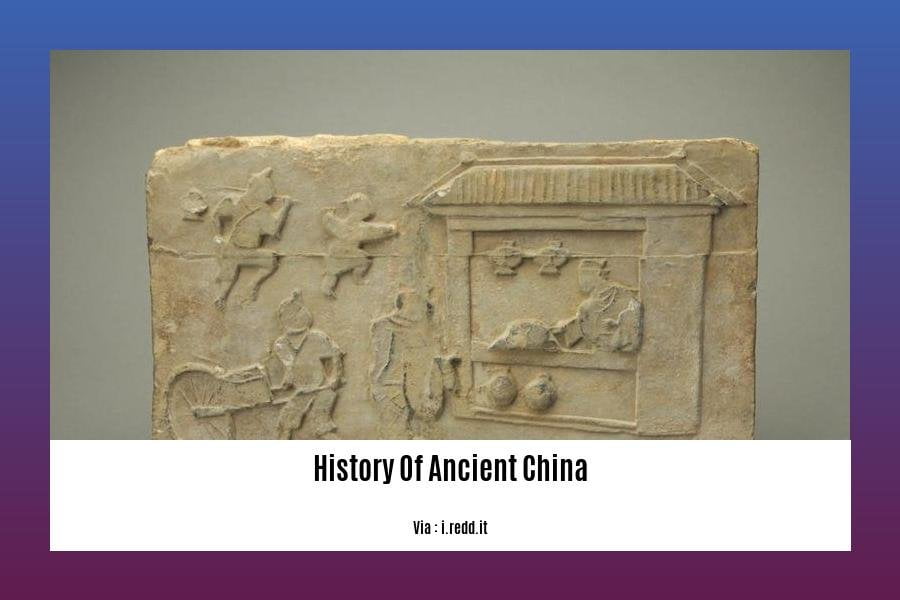
Ancient China boasts a rich tapestry of civilizations, empires, and cultural achievements that have left an enduring legacy on the world stage. Let’s delve into key milestones that shaped this extraordinary civilization:
Earliest Civilizations and Innovations
- Homo Sapiens roamed the Chinese landscape as early as 40,000 B.C.
- 17,000 B.C. marked the emergence of the first ceramics
- Around 10,000 B.C., the cultivation of rice and millet laid the foundation for agriculture
Establishment of Dynasties
- 2,100 B.C. saw the rise of the Shang Dynasty, China’s first historically verifiable dynasty
- The Zhou Dynasty (1050-256 B.C.) ushered in a period of cultural flourishing, including the development of Confucianism
Imperial Unification
- 221 B.C. marked a turning point as Qin Shi Huang united China under the Qin Dynasty, establishing the first imperial state
- The Han Dynasty (206 B.C. – 220 C.E.) witnessed a golden age of stability, prosperity, and the expansion of China’s territory
Scientific and Technological Advancements
- Ancient China made notable scientific contributions, including the invention of paper, the compass, and gunpowder
- The construction of the Great Wall began around 700 B.C., a testament to the ingenuity of Chinese engineering
Cultural Legacy
- Chinese civilization has deeply influenced global culture through its philosophy, art, and literature
- The teachings of Confucius and Lao Tzu continue to resonate today, shaping ethical and spiritual values
Timeline of Important Events
| Period | Event |
|---|---|
| 40,000 B.C. | Appearance of Homo Sapiens in China |
| 17,000 B.C. | First Ceramics |
| 10,000 B.C. | Cultivation of rice and millet |
| 2,500 B.C. | Longshan Culture |
| 2,100 B.C. | Shang Dynasty |
| 1,700 B.C. | Zhou Dynasty |
| 700 B.C. | Construction of the Great Wall begins |
| 221 BCE | China unified under Qin Shi Huang |
| 206 BCE – CE 220 | Han dynasty |
Discover the captivating history of Chinese civilization spanning centuries, from its inception to its profound influence on the world stage. Explore the enigmatic dynasties that shaped ancient China, each leaving an indelible mark on the nation’s rich tapestry. Delve into the remarkable Chinese inventions history, showcasing the ingenuity and innovation that have propelled China to the forefront of technological advancements.
History of Ancient China Civilization
Before you dive into the history of ancient China civilization, let’s dig into some key takeaways:
Key Takeaways:
- Ancient China’s civilization flourished from the early 2nd millennium BCE to 220 CE.
- Its establishment laid the foundation for the Chinese civilization we know today.
- Significant achievements include the development of writing, urbanization, and a centralized government.
- Ancient China faced challenges such as warfare and natural disasters.
- Its advancements in technology and culture influenced other civilizations.
The written language, a logographic system, was a hallmark of ancient China. Characters represented words and ideas, allowing for the recording of history, literature, and laws.
Urbanization played a significant role in shaping ancient Chinese society. Cities emerged as administrative, economic, and cultural centers. The development of complex political systems and bureaucracies allowed for the expansion and governance of these urban areas.
The establishment of a centralized government, beginning with the Qin dynasty in 221 BCE, marked a turning point in ancient Chinese history. The unification of China under a single imperial state fostered stability, economic growth, and cultural exchange.
Ancient China faced numerous challenges, including warfare and natural disasters. Frequent conflicts between rival states and nomadic tribes tested the resilience of its political and military systems. Natural disasters such as floods, droughts, and earthquakes posed significant threats to society.
Despite these challenges, ancient China’s achievements extended beyond its borders. The Silk Road, a network of trade routes, facilitated the exchange of goods, ideas, and technologies with other civilizations. Chinese innovations in papermaking, printing, and gunpowder had a profound impact on the world.
Citation:
– “Ancient China: Chinese Civilization And History to 220 CE” by TimeMaps,
FAQ
Q1: Which dynasty is considered the first imperial state of China?
A1: The Qin Dynasty, established by Qin Shi Huang in 221 BCE.
Q2: During which period did the Great Wall of China begin construction?
A2: Construction of the Great Wall began during the Zhou Dynasty, around 700 B.C.
Q3: What was the name of the culture that emerged around 2,500 B.C.?
A3: Longshan Culture.
Q4: What technological advancement characterized the Shang Dynasty?
A4: Development of bronze metallurgy.
Q5: Which achievement marked a major milestone in Chinese civilization?
A5: Development of a written language.
- Unveiling Bernhard Caesar Einstein’s Scientific Achievements: A Legacy in Engineering - July 15, 2025
- Uncover who is Jerry McSorley: CEO, Family Man, Business Success Story - July 15, 2025
- Discover Bernhard Caesar Einstein’s Scientific Contributions: Unveiling a Legacy Beyond Einstein - July 15, 2025
